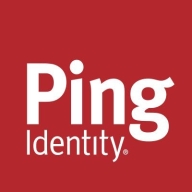

ForgeRock and Ping Identity Platform compete within the identity and access management space. Ping Identity Platform seems to have the upper hand in deployment speed and scalability.
Features:ForgeRock offers versatile integration capabilities, adaptive risk-based authentication, and an extensive policy framework. Ping Identity Platform provides Secure Single Sign-On, multi-factor authentication, and ease of integration with existing systems.
Room for Improvement:ForgeRock could improve in ease of deployment, reducing setup complexity, and enhancing customer support accessibility. Ping Identity Platform can enhance multi-cloud support, refine its mobile interface, and expand its customizability options without code.
Ease of Deployment and Customer Service:Ping Identity Platform provides streamlined deployment with cloud-native solutions, reducing setup time and offering consistently high-rated customer service. ForgeRock requires more effort and resources for deployment, which may extend project timelines.
Pricing and ROI:ForgeRock has higher setup costs due to its comprehensive feature set and customization options. Ping Identity Platform offers a competitive ROI through cost-effective cloud solutions and faster implementation, contributing to a favorable ROI in many scenarios.
| Product | Market Share (%) |
|---|---|
| Ping Identity Platform | 7.3% |
| ForgeRock | 6.8% |
| Other | 85.9% |


| Company Size | Count |
|---|---|
| Small Business | 13 |
| Midsize Enterprise | 4 |
| Large Enterprise | 13 |
| Company Size | Count |
|---|---|
| Small Business | 8 |
| Midsize Enterprise | 2 |
| Large Enterprise | 20 |
ForgeRock is a comprehensive open-source identity and access management solution designed to meet the unique needs of your users and workforce. With ForgeRock you can orchestrate, manage, and secure the complete lifecycle of identities in any cloud or hybrid environment. ForgeRock allows you to set up bot detection, identity proofing, and risk-based authentication.
With ForgeRock, you can define access policies and automate the management of the identity lifecycle all from a central, easy to use, and graphical dashboard. ForgeRock Access Management allows you to build safe authentication using options like passwordless and usernameless logins, single sign-on, biometrics, contextual analytics, and behavioral authentication. When threats appear, you can swiftly change how your users access your most sensitive applications and provide users with secure access to the applications, systems, and resources they need on demand.
ForgeRock Benefits and Key Features
Reviews from Real Users
ForgeRock stands out among its competitors for a number of reasons. Two major ones are its robust identity and access tools and its being easy to manage and scale with one central dashboard.
PeerSpot users note the effectiveness of these features. A technology solutions leader at an outsourcing company writes, “We need it for multiple clients, multiple implementations. Not all of them are necessarily a multi-tenant solution. We need a very versatile solution that can do a lot of work, but from a single instance that we can centralize authentications and we don't duplicate the efforts and that's where ForgeRock seems to do better.”
Mohamed B., a cyber security consultant at a tech company, writes, "Their access management solution, OpenAM, is most valuable because it meets the needs of a lot of users. ForgeRock secured our system so that it is accessed only by authorized people, and it implemented the SSO."
We monitor all Access Management reviews to prevent fraudulent reviews and keep review quality high. We do not post reviews by company employees or direct competitors. We validate each review for authenticity via cross-reference with LinkedIn, and personal follow-up with the reviewer when necessary.